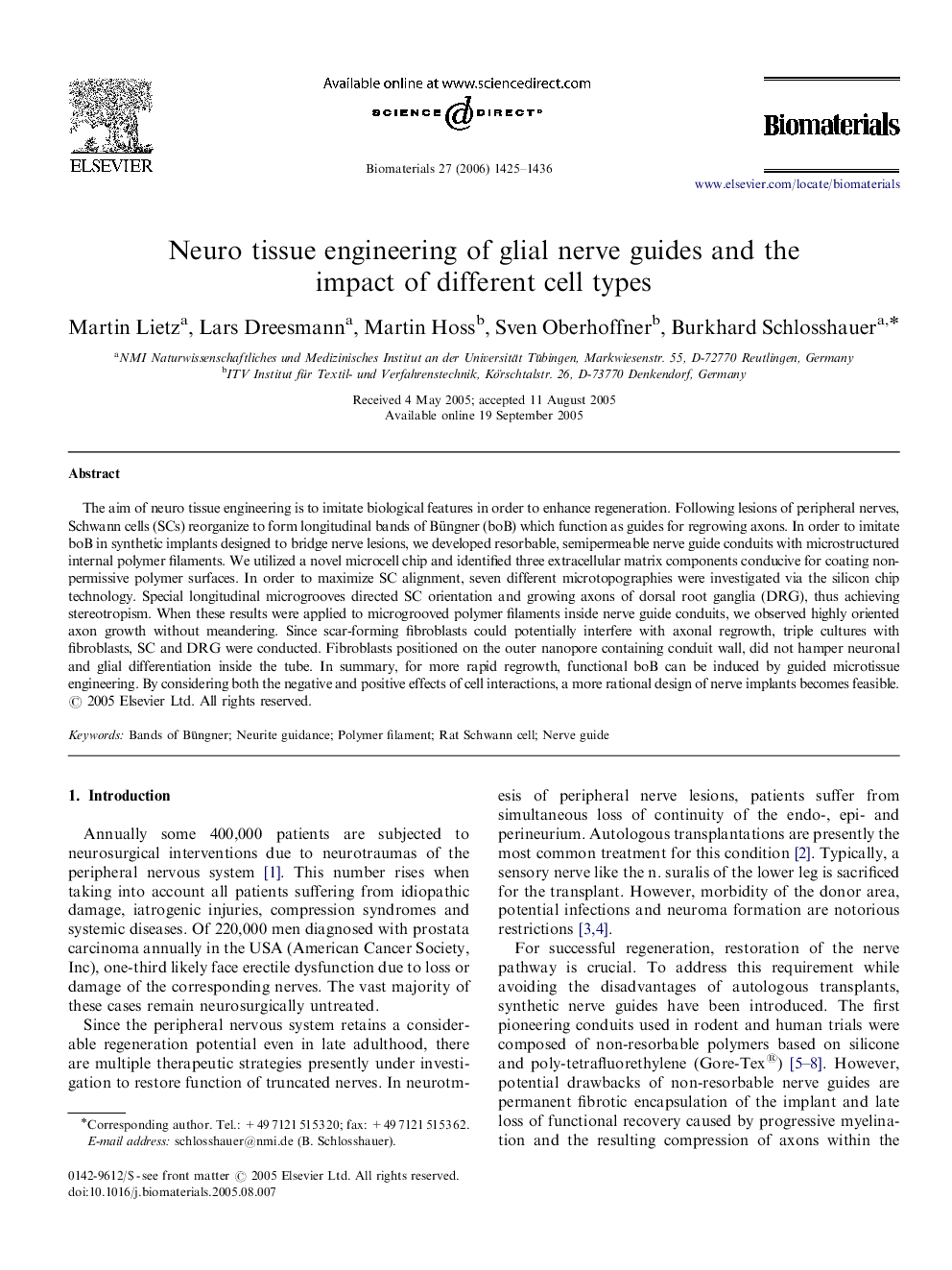| کد مقاله | کد نشریه | سال انتشار | مقاله انگلیسی | نسخه تمام متن |
|---|---|---|---|---|
| 11552 | 747 | 2006 | 12 صفحه PDF | دانلود رایگان |

The aim of neuro tissue engineering is to imitate biological features in order to enhance regeneration. Following lesions of peripheral nerves, Schwann cells (SCs) reorganize to form longitudinal bands of Büngner (boB) which function as guides for regrowing axons. In order to imitate boB in synthetic implants designed to bridge nerve lesions, we developed resorbable, semipermeable nerve guide conduits with microstructured internal polymer filaments. We utilized a novel microcell chip and identified three extracellular matrix components conducive for coating non-permissive polymer surfaces. In order to maximize SC alignment, seven different microtopographies were investigated via the silicon chip technology. Special longitudinal microgrooves directed SC orientation and growing axons of dorsal root ganglia (DRG), thus achieving stereotropism. When these results were applied to microgrooved polymer filaments inside nerve guide conduits, we observed highly oriented axon growth without meandering. Since scar-forming fibroblasts could potentially interfere with axonal regrowth, triple cultures with fibroblasts, SC and DRG were conducted. Fibroblasts positioned on the outer nanopore containing conduit wall, did not hamper neuronal and glial differentiation inside the tube. In summary, for more rapid regrowth, functional boB can be induced by guided microtissue engineering. By considering both the negative and positive effects of cell interactions, a more rational design of nerve implants becomes feasible.
Journal: Biomaterials - Volume 27, Issue 8, March 2006, Pages 1425–1436